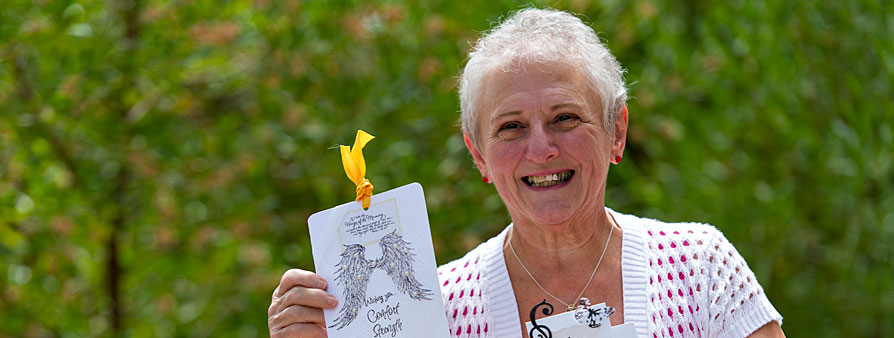
Diane Milne - Seeing is Believing
A life-threatening emergency started the sprint—and then the marathon—to save Diane Milne.
It was a blistering hot Phoenix afternoon when Diane Milne stepped outside to start the swimming pool pump. As Diane grasped the pool fence railing, her knuckles clenched and “everything became intensely bright,” she recalls. “I knew my heart had stopped.”
Somehow, Diane managed to call 911. She remembers waking at Dignity Health Mercy Gilbert Medical Center with cardiologist Zaki Lababidi, MD by her side. Diane had recently retired from a 37-year nursing career and the two knew each other well. “I don’t know how you survived,” he said as he knelt by her bedside.
Diane had experienced a massive blood clot. The cause? Hormones secreted by an unbelievably large tumor that wrapped around her kidneys, stomach, and spinal cord. And because the cancer was a rare disease, generally seen in children and in men, “my age and gender were against me,” in finding an effective treatment, Diane explains.
Rohit Sud, MD developed a treatment plan that involved surgery
and aggressive chemotherapy— but what it really came down to
was belief. “At my bedside, with my husband right beside him,”
Diane recalls, “Dr. Sud took my hands and said, ‘I will fight with
you. We will do this together.’”
And they did. While Dr. Sud and his team focused on medical care, Diane supplemented their efforts through a program called Guided Imagery—a therapy that connects mind, body, and spirit through words, images, and soothing music. Its positive effects have been noted and studied by scientists and researchers across the country.
Diane remembers a key moment in her recovery, when she asked for her hospital bed to be moved close to a window so she could watch Fourth of July fireworks. “I imagined the tumor blowing up and falling apart and turning into something beautiful.”
When CT scans revealed the tumor was shrinking, Dr. Sud excitedly grasped Diane’s hand. “You did it! You did it!” he said. Diane looked him firmly in the eye and replied, “No. We did it. Together.”
Diane is now in remission, and using her full energy to implement Guided Imagery programs at other Dignity Health facilities. “I was beyond critical,” Diane explains. “And to come out of it with my brain still intact, and to use the beautiful days I have ahead to help others see and achieve a miracle— that’s a true blessing.”

For more information, Contact Us.